Introduction
What is tennis elbow?
Tennis elbow is an injury to the tendon at the bony bump on the outer side of your elbow. The tendons link the bone to some of the muscles that move your wrist and fingers. This bony lump is called the lateral epicondyle. The medical name for tennis elbow is ‘lateral epicondylosis’ or lateral ‘epicondylitis’.
What are the symptoms?
Tennis elbow gives pain and tenderness on the outside of your elbow. It may spread down your forearm. Pain normally lasts for 6 to 12 weeks. Tennis elbow is generally a self-limiting condition, and spontaneously improves in about 80–90% of people over 1–2 years. It may, however, last several years in severe cases.
What causes tennis elbow?
About 5 in 1000 adults develop tennis elbow each year. Women and men are equally affected, and peak incidence occurs between 35 to 54years of age. Repeated use of the muscles that lift your wrist up can cause an injury to the tendons. These muscles are also used when you grip and pull. This is why work activities such as gardening and painting, as well as sports can cause tennis elbow.
What can I do to treat tennis elbow?
- Cold therapy – It may be helpful to apply ice packs or frozen peas wrapped in a damp towel over the painful area. Do this for up to 10 minutes. You can do this before and after the exercises. Repeat this 3 times a day for the first few days.
- Medication – A short course of pain relieving medication. Please ask your pharmacist or GP for advice on this.
- Support – A forearm or ‘epicondylar’ clasp may help by relieving pressure on the painful area. These are available from pharmacists or over the internet.
- Look at what you do by pacing activities which means stopping activities that bring on your pain before your pain starts to increase. Plan your activities; take work breaks and micro breaks. Avoid sustained or repetitive grips. If you have to lift, lift with your palms up, not palms down. Ensure sports and work equipment are set up and used correctly
- A steroid injection may help ease pain, if the pain is of recent onset and pain is severe. Injections have been shown to have poorer outcomes and lower rates of complete recovery or symptom improvement at one year compared with placebo injection. There is also greater rate of recurrence at one year follow-up.
- Surgery is rarely used. It is only used in long standing cases with variable outcomes.
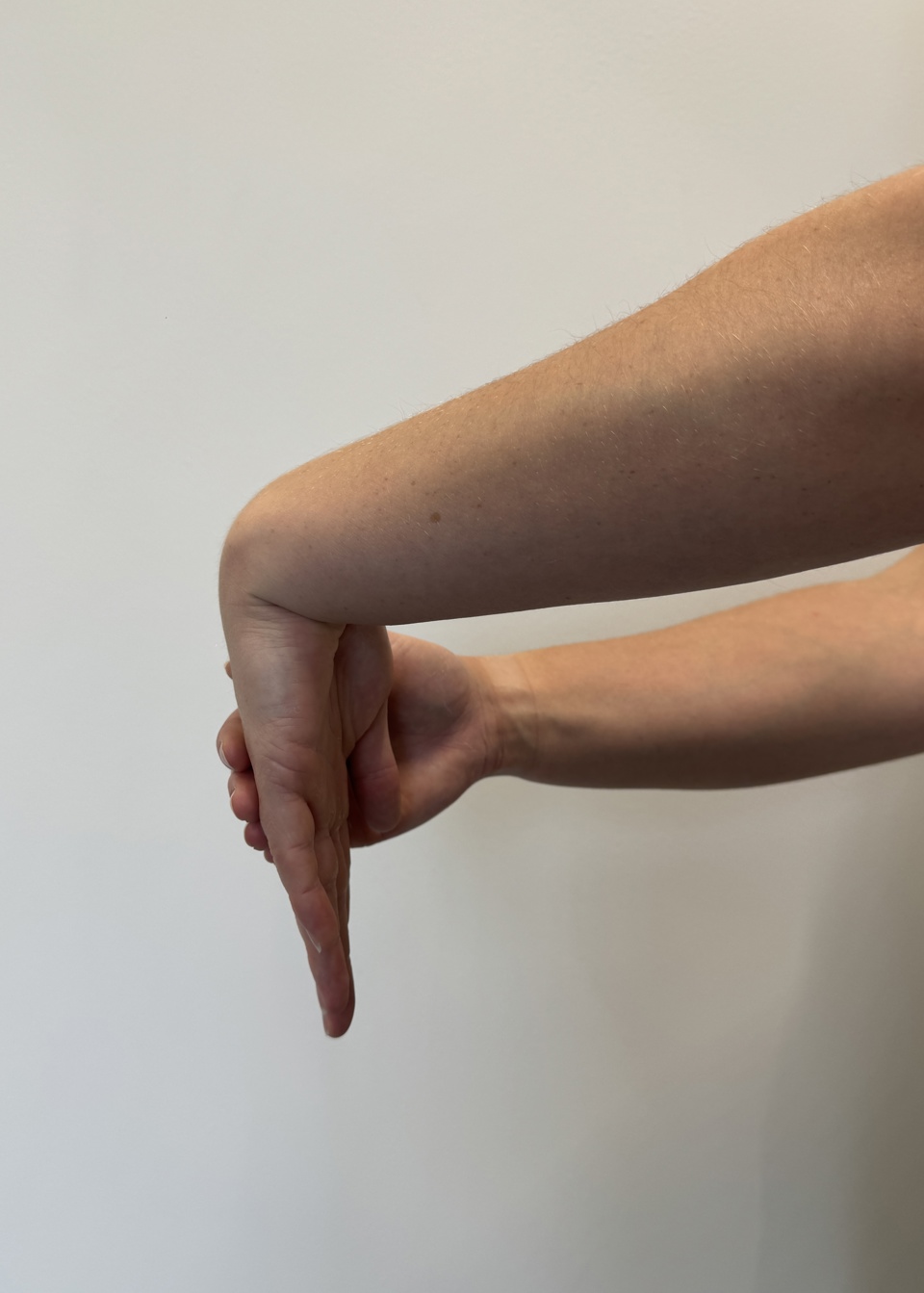
Wrist Extensor Stretch
Straighten your elbow and drop your wrist down (see picture). Gently press on the back of your hand with your other hand. Feel a stretch in your forearm muscles. Hold for 15 seconds and repeat 3 to 5 times. Repeat this exercise 2 to 3 times daily. These stretches are useful before playing sport with your affected arm.
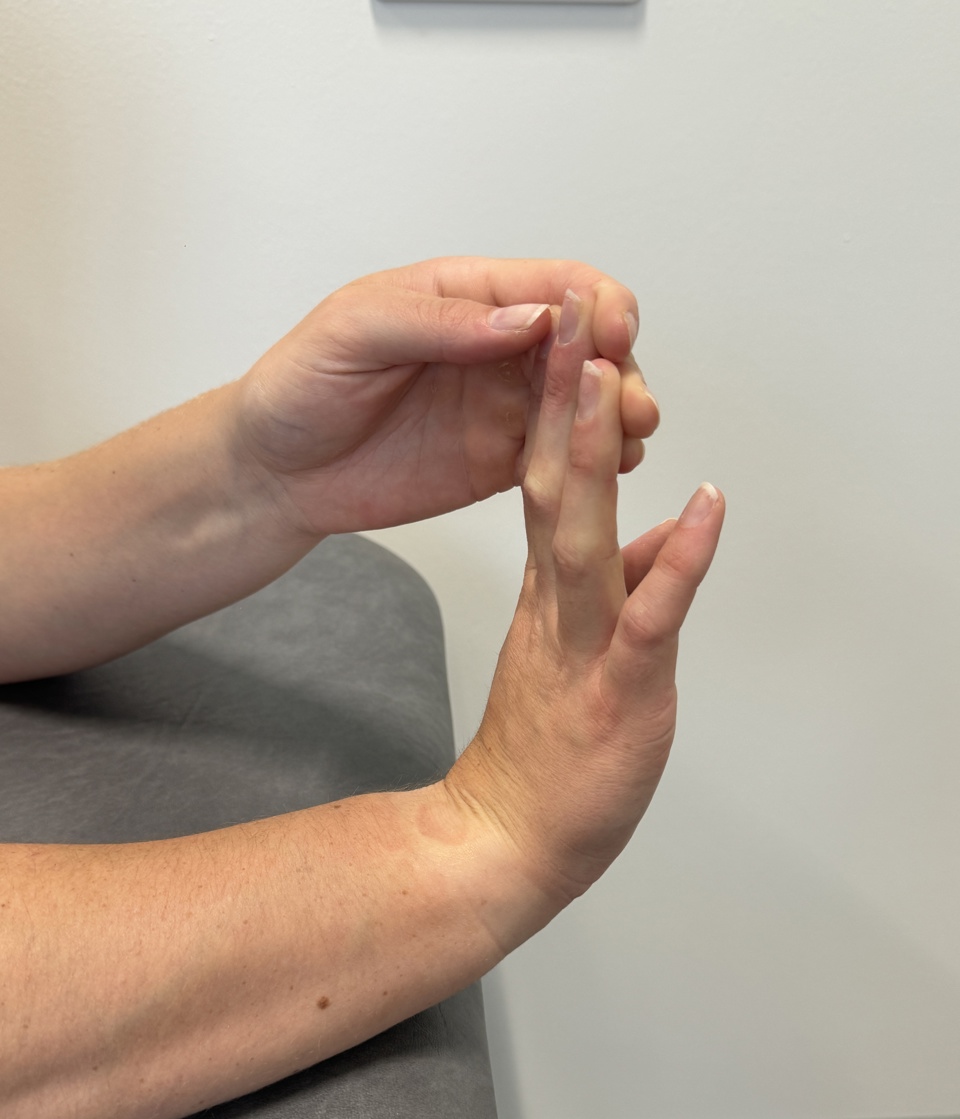
Wrist Flexor Stretch
Straighten your elbow and using your other hand pull your fingers and hand up to feel a stretch in the forearm muscles (see picture). Feel a stretch in your forearm muscles. Hold for 15 seconds and repeat 3 to 5 times. Repeat this exercise 2 to 3 times daily.
These stretches are useful before playing sport with your affected arm.
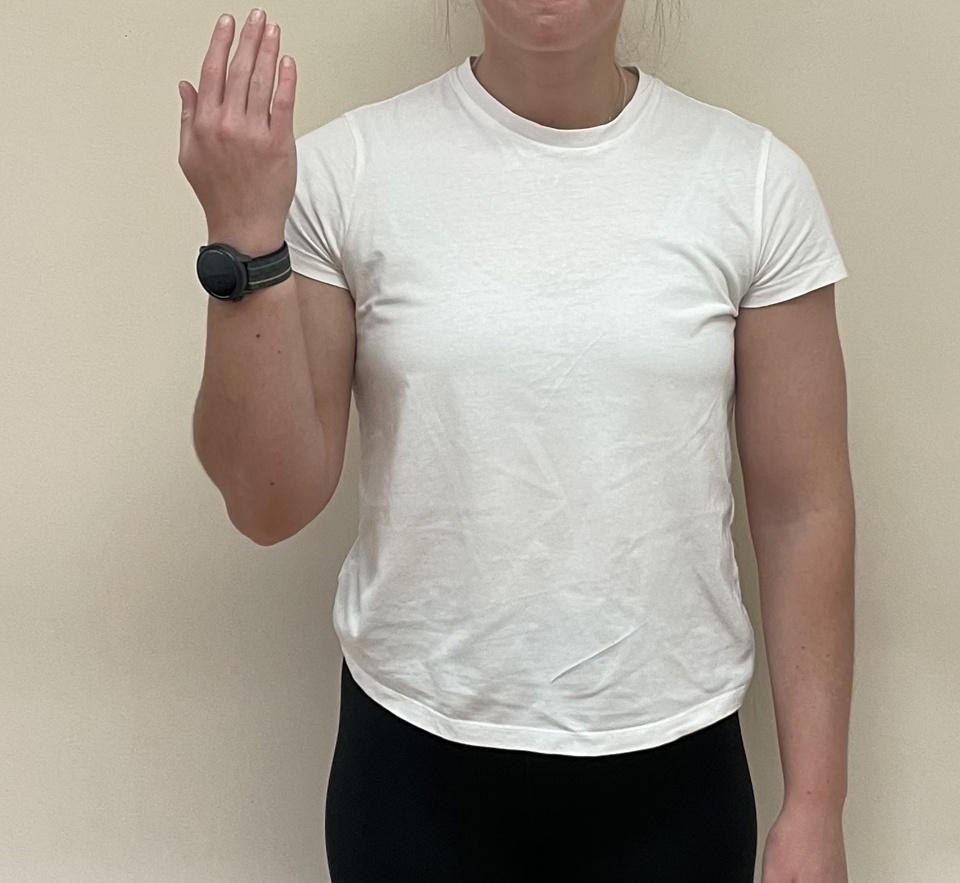
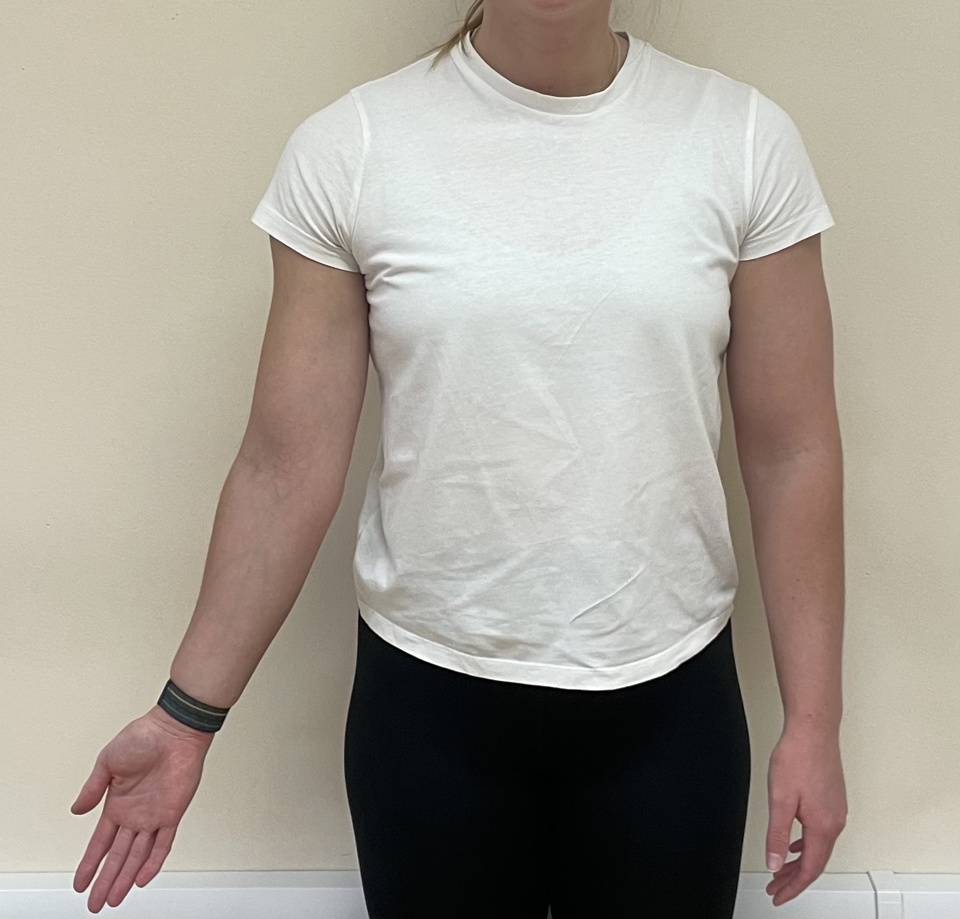
Elbow Flexion and Extension
Bend then straighten you elbow.
Repeat 10 times and then increase to 3 sets of 15 repetitions as pain allows.
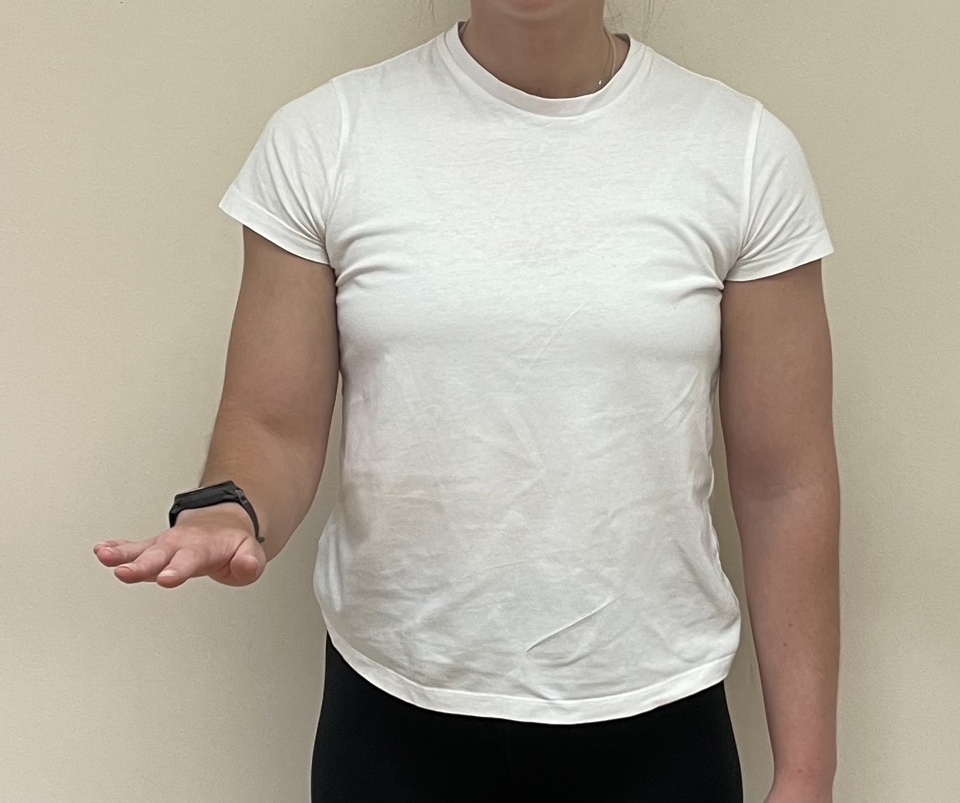
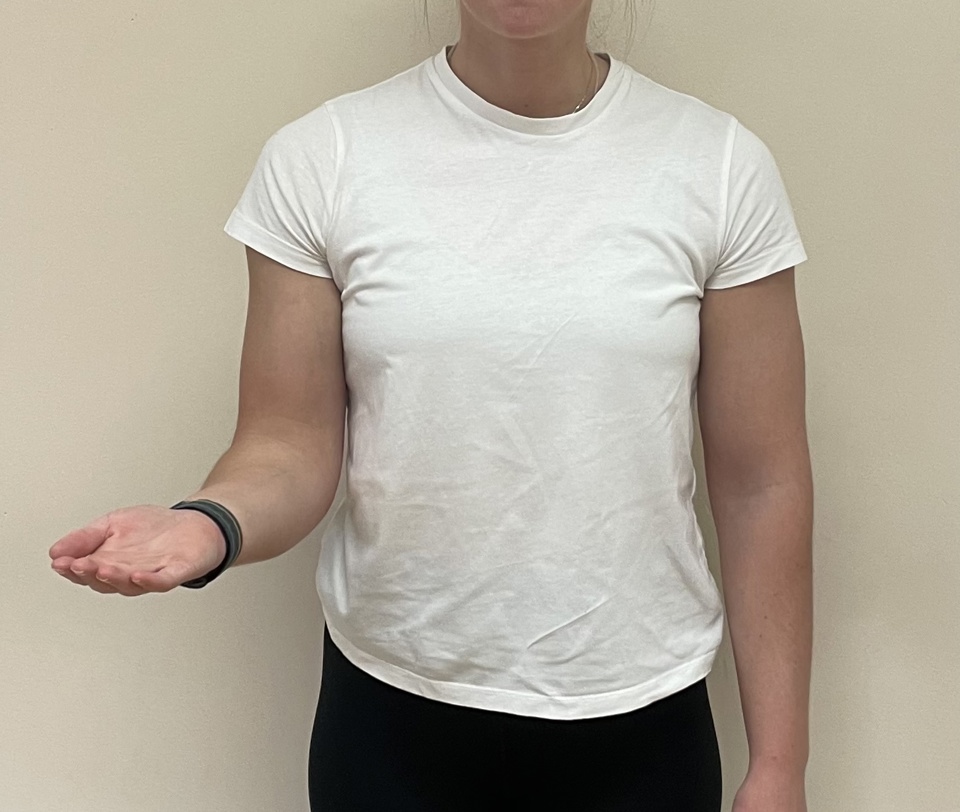
Supination and Pronation
With your forearm supported on a table. Put the back of one hand on the table and then turn your handover palm down.
Hold for 5 seconds then slowly release. Repeat10 times then increase to 3 sets of 10 repetitions.
This exercise can be progressed by adding weight e.g. a can of beans
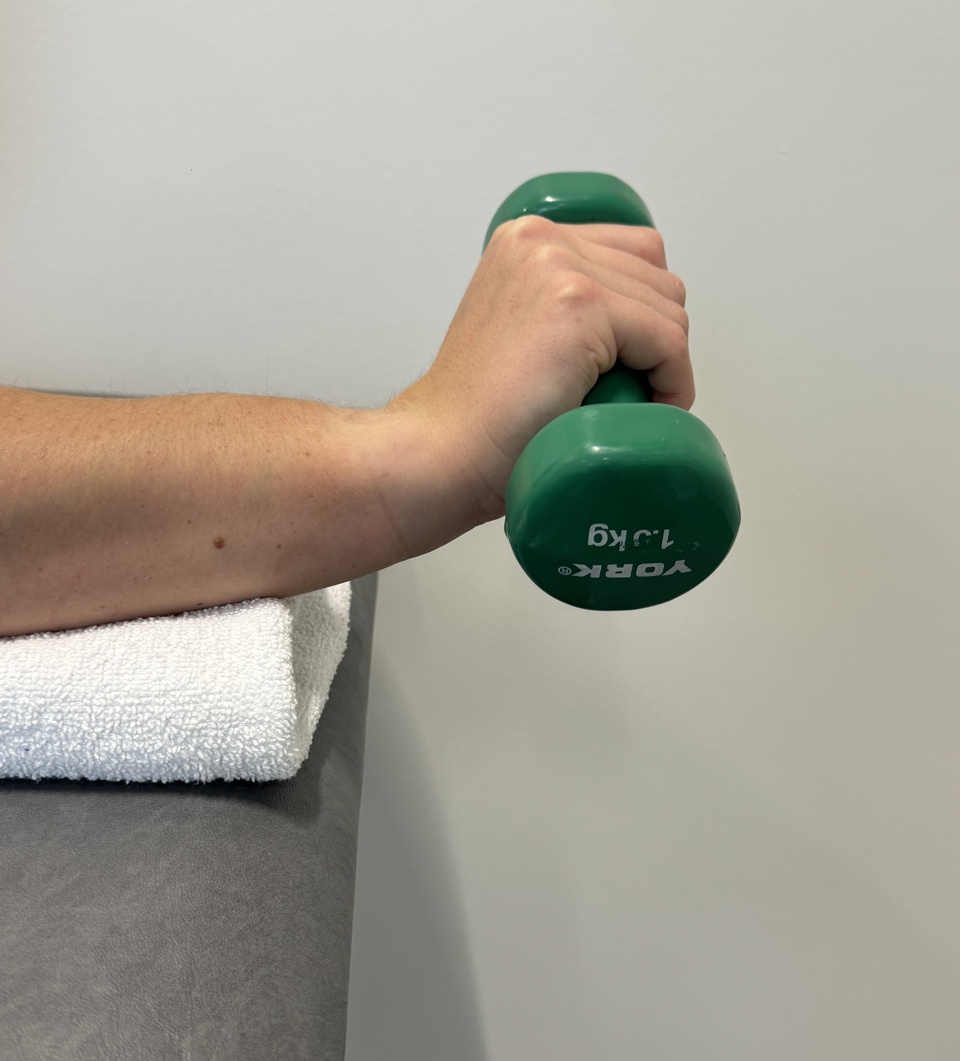
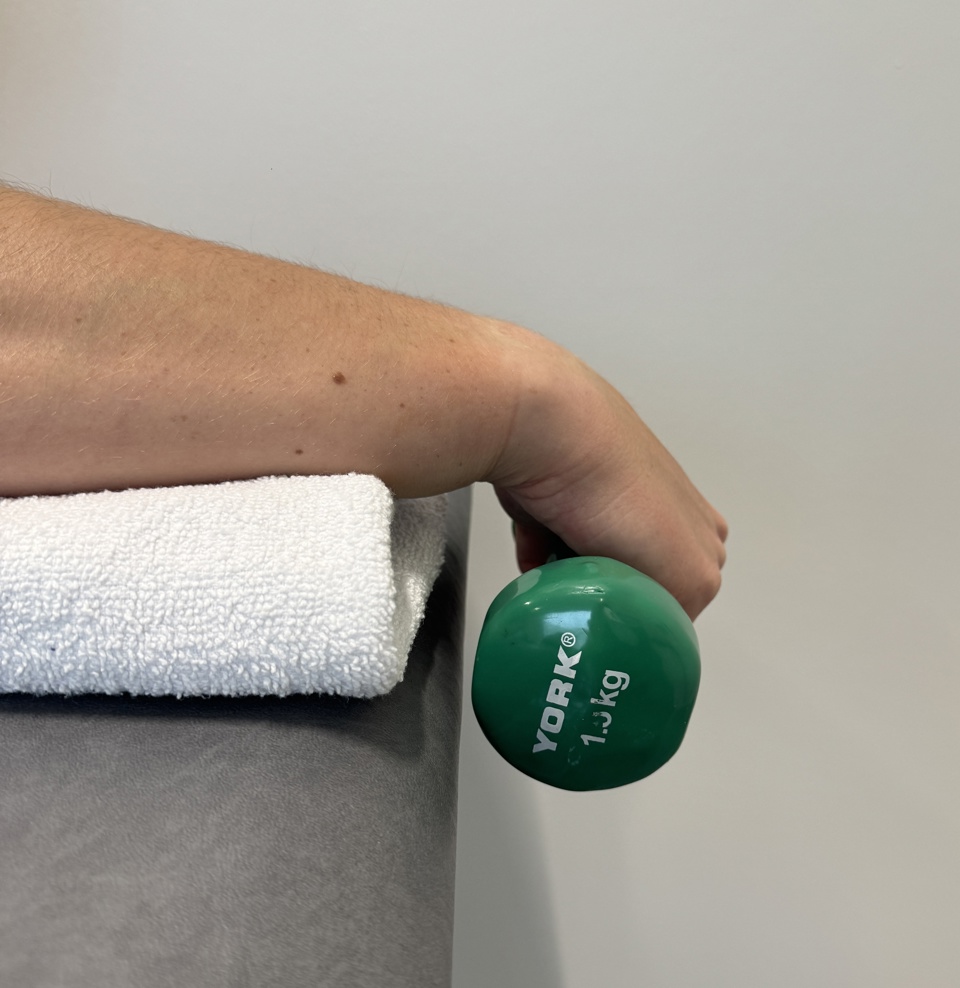
Wrist Extensor Strengthening (Concentric)
Place your forearm on a table with the back of your hand facing up. Hold onto a small weight. Slowly bend your wrist up as far as possible.
Return to a neutral position where your hand is level with the table.
Apply a slow and controlled movement.
Repeat 10 times. Increase to 3 sets of x 10 repetitions as pain allows.
Progress the exercise by increasing the weight.

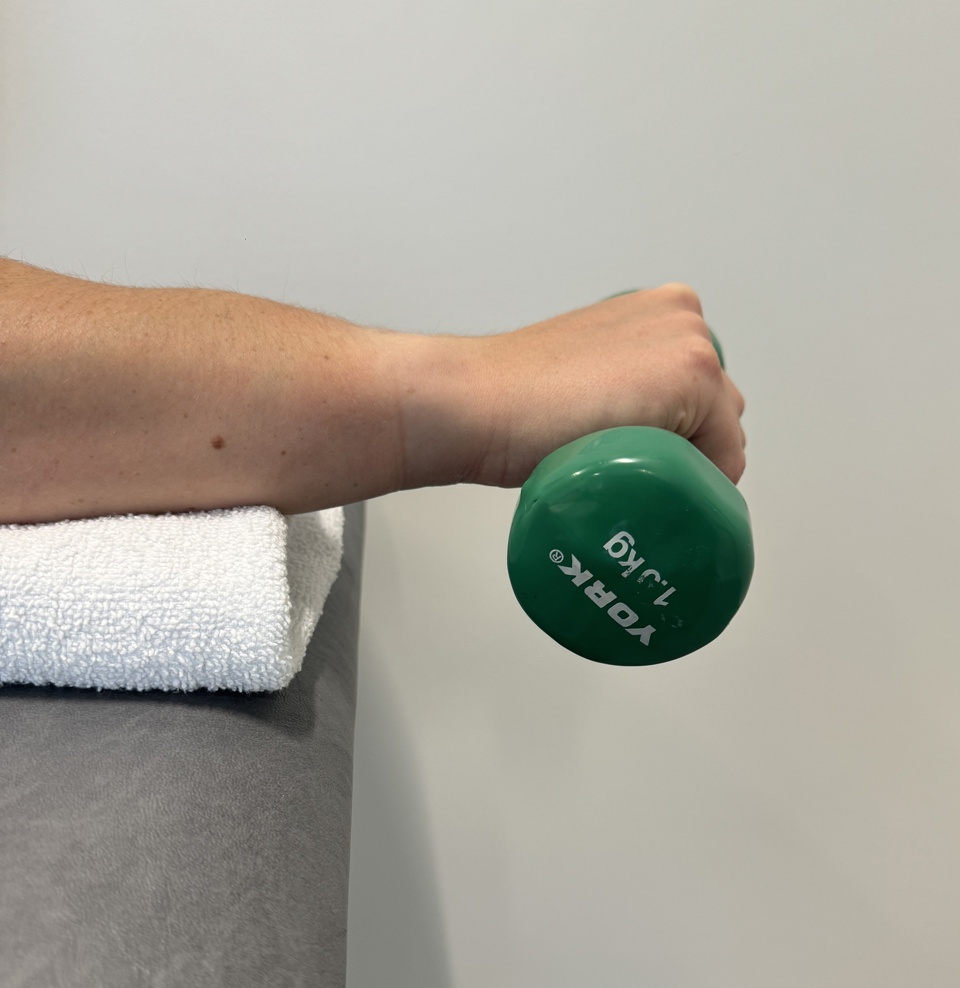
Wrist Extensor Strengthening (Eccentric)
Hold onto a small weight in your affected arm.
- Rest your affected arm over the edge of a table with your palm facing downwards and your forearm fully supported. Use your other hand to lift the affected hand up.
- Now let your hand drop down over a 6 second period.
Repeat these movements and complete 10 repetitions, 3 times a day.
Increase to 3 sets of 10 repetitions as pain allows.
Tyler Twist Flexbar exercises for Tennis Elbow
Some people find these new exercises for Tennis Elbow are helpful. These use a rubber bar that can be purchased relatively cheaply online. The rubber bars come in different ‘strengths’ (colours) from light to heavy. Start with the lightest initially.
Repeat 10 to 15 times up to 3 times a day. Begin with the red or light ‘Flexbar’ and progress to the next colour when you can easily perform 3 sets of 15 per day.
Use ice for any soreness following exercise.
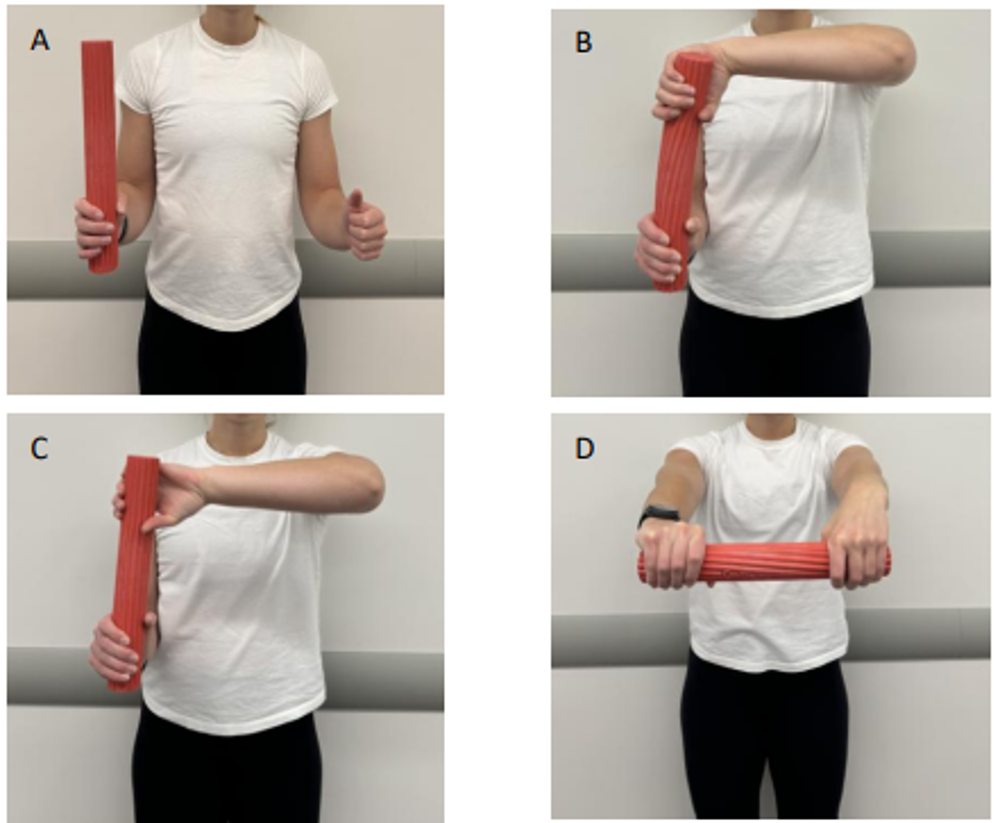
Useful Information
NHS Inform
www.nhsinform.scot/illnesses-and-conditions/muscle-bone-and-joints
www.nhsinform.scot/illnesses-and-conditions/muscle-bone-and-joints/guidelines/price-guidelines
The Chartered Society of Physiotherapy
www.csp.org.uk/conditions/managing-your-bone-joint-or-muscle-pain
Therabar Exercises
Therapeutic Eccentric Exercise For Tennis Elbow
Returning to activities
Returning to work
Most individuals can continue to work. Consider managing your workload to reduce your pain.
Returning to leisure activities
Your ability to start these will be dependent on the pain, range of movement and strength. Start with short sessions, involving little effort and gradually increase the load.
Please discuss with your physiotherapist if you have any questions or concerns relating to the exercises provided in this leaflet. Similarly, should you not be progressing as planned please contact the Physiotherapy Service for further advice (Contact telephone number: 01592 647199).
Worries or concerns
Should you have any worries or concerns, please contact your Physiotherapist or GP during working hours or contact NHS24 on 111 out of working hours.
If you continue to experience problems then you should consult a healthcare professional.
Accessible formats
If you require this information in a community language or alternative format such as Braille, audio, large print, BSL, or Easy Read, please contact the Equality and Human Rights Team at: email: fife.EqualityandHumanRights@nhs.scot or phone 01592 729130. For people with a hearing or verbal impairment you can also contact the team through the NHS Fife SMS text service number on 07805800005.




